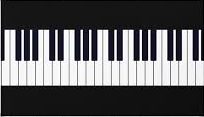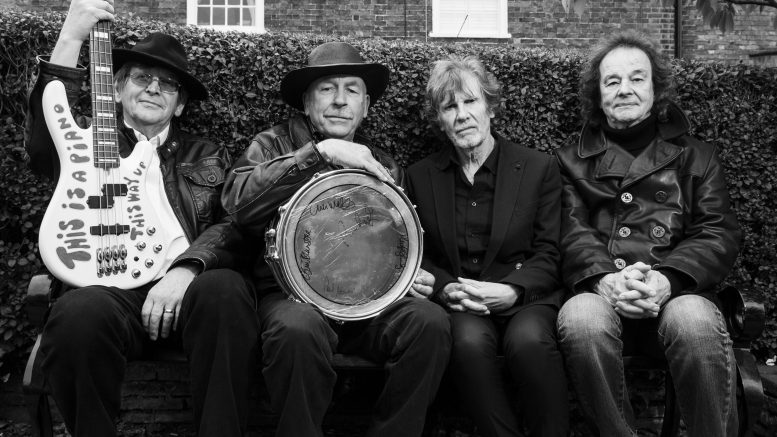Chamber-pop album Odessey and Oracle, meant to be band’s last, to be performed at Danforth Music Hall on April 2.
Nick Krewen,
Thu., March 30, 2017
What an “Odessey” for the Zombies.
Fifty years after the U.K. pop quintet’s influential signature album Odessey and Oracle was declared a commercial flop that forced the band’s breakup, Rod Argent finds himself recreating the project with most of the original lineup on a North American tour that comes to the Danforth Music Hall on April 2.
“It’s a bit of a miracle on several levels,” notes Argent down the line from a West Virginia stop, weaving a tale that includes a post-mortem hit, a couple of future ZZ Top members and the weighty influence of mod rocker Paul Weller.
The story begins in St. Albans, Hertfordshire, England, in 1963, with the lineup of keyboardist Argent, singer Colin Blunstone, bass player Chris White, guitarist Paul Atkinson and drummer Hugh Grundy winning a local band competition.
“The prize was a single release with Decca Records,” recalls Argent, 71. “We were going to record ‘Summertime’ — the Gershwin song — but our producer Ken Jones said, ‘Why don’t you try and write something for the session?’
“Chris and I wrote a song each. I wrote ‘She’s Not There’ and it was pretty much the second song I’d ever written.”

The infectious million-seller took America by storm, holding at No. 2 for a couple of weeks during the summer of ’64. A year later, another snappy Top 10 hit — “Tell Her No” — followed in the U.S., but the band couldn’t replicate its success in its home country.
“We were based very much in the U.K. and we only had one hit there,” Argent explains. “In those days you were very much based where you came from and the gig money was going down.”
By the time 1967 rolled around, pop and rock music had expanded its imagination beyond the three-minute radio-friendly single, so the Zombies decided to go for broke, artistically speaking.
“We did the album because it was in the air that the Zombies might split up. really for commercial reasons,” he explains. With a limited budget and Geoff Emerick, fresh from recording Sgt. Pepper’s Lonely Hearts Club Band, on board as engineer, the 12-song chamber-pop album Odessey and Oracle was recorded within three months.
After the first single, “Care of Cell 44,” was pushed down the chute with little reaction, both guitarist Atkinson and singer Blunstone told Argent, “Look, we need to make some money. We’ve got to break up.”
The band dissolved in December 1967; Odessey and Oracle was released posthumously, so to speak, in 1968.
“We were very happy with it,” Argent recalls. “It got great reviews, but it didn’t sell anywhere.”
Rod Argent immediately formed his namesake band Argent and founded a production company with White that ended up producing Blunstone’s solo material, initially issued under the pseudonym of Neil MacArthur.
In the meantime, Al Kooper — the Blood, Sweat and Tears founder and Bob Dylan session man — had become a staff producer for New York’s Columbia Records and was told to head to the U.K. to find new acts. One of the albums he stumbled across was Odessey and Oracle. In 1969, the label issued “Time of the Season,” which became a worldwide smash and a No. 1 hit in the U.S.
“But then, even with the hit, the album didn’t even really sell in America at that time,” Argent recalls.
All the same, “Time of the Season” inspired several illegitimate U.S. bands to tour as the “original” Zombies, including a configuration that included ZZ Top’s future rhythm section.
“Just a couple of years ago we were amazed to learn that Frank Beard and Dusty Hill from ZZ Top had actually formed a fake Zombies. They admitted it in an article. It just amused me. I thought it was great. I said to Colin, ‘When we finish our tour, we have to go out as a ZZ Top tribute band and repay the compliment.’”
Despite the belated success of “Time of the Season,” Argent said there was no inclination to reform the group.
“We never wanted to. I was always proud and grateful of what the Zombies did, but that was the past to me,” says Argent, who scored a Top 10 hit in 1972 with “Hold Your Head Up” and then continued on as a session man, playing piano for some of the Who’s Who Are You sessions and Andrew Lloyd Webber’s Variations.
White and Blunstone continued as solo artists. Interest in Odessey and Oracle wasn’t resurrected until the late ’80s, from what Argent says was an unexpected source.
“When Paul Weller was the biggest thing in U.K. music and had several hits in the top 10 with the Jam, he completely blew us away by saying his favourite album of all time is Odessey and Oracle,” Argent remembers. “Later Tom Petty and Dave Grohl said great things about the album.
“It’s a remarkable story really, because it’s never going to sell like Dark Side of the Moon, but it sells more every year than it did when it first came out. . . . It seemed to relate to a younger generation as well, which completely knocks me out.”
When Argent and Blunstone reunited in 2000 for “a half a dozen gigs for fun,” the duo found they couldn’t escape the Zombies tag. After realizing that they had rarely played any Zombies material onstage back in the day, Argent and Blunstone reunited with White and incorporated more of their old band’s songs into their set.
“It felt natural,” says Argent, adding that the revamped lineup that includes ex-Kinks bassist and Argent cousin Jim Rodford on bass, his son Steve Rodford on drums and Tom Toomey on guitar, has released two acclaimed albums, 2011’s Breathe Out, Breathe In and 2015’s Still Got That Hunger.
The Danforth Music Hall show will feature both rosters: the contemporary one will perform during the first half of the show, with four-fifths of the original lineup (guitarist Atkinson died in 2004) performing Odessey and Oracle during the second half.
Argent says after this tour, Odessey and Oracle will be put to bed, but the Zombies will soldier on.
“If it felt like things were declining I wouldn’t want to do it anymore,” says Argent. “I don’t need to. I’ve been very lucky with some of the songs I’ve written, but it’s such a joy to be on that stage and feel that vitality still. It’s the most exciting thing to write and create; otherwise you feel like you’re dead.”
The Zombies live on — thanks to a 50-year-old cult classic album | Toronto Star


Be the first to comment on "The Zombies live on – thanks to a 50-year-old cult classic album"